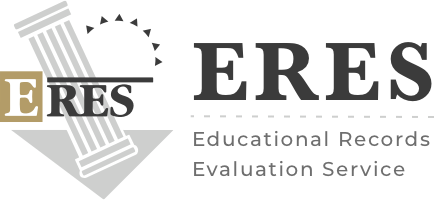Blog
Navigating the 5 Levels of Education in the USA: A Guide

Studying in the United States is a life-changing experience for international students. So, these students must grasp the nuances of the American education system, which is uniquely structured into five distinct levels.
Understanding the 5 levels of education in the US helps plan your education but also assists you in setting practical goals at each level.
In this blog, we will study the 5 levels of education and how it will help international students plan their higher education in the US.
What Are The 5 Levels Of Education In The US?
Let's understand all the five levels in the US education system in detail, starting with:
Level 1: Early Childhood Education
Early Childhood Education (ECE) in the United States is the formal and informal teaching of children from birth to age eight.
ECE programs aim to provide children with the developmental and social-emotional skills they need to succeed in school and life.
These programs are offered in a variety of stages, including:
Preschools:
Preschools are typically center-based programs that serve children ages three to five. They offer a variety of learning activities, such as play-based learning, language development, and early literacy and numeracy skills.
Kindergartens:
Kindergartens are the first year of formal schooling in the United States. They are typically part of elementary schools and serve children ages five to six. Kindergartens focus on developing children’s social-emotional skills, literacy, numeracy, and other foundational skills.
Level 2: Elementary Education
Elementary education is the second of the 5 levels of education in the United States.
Depending on the school system, it typically includes children from around five to eleven years old, covering kindergarten through fifth or sixth grade.
Here's a simple breakdown of its general structure:
Age and Grades:
Children usually start elementary education around age five in kindergarten and continue until they are about eleven or twelve, finishing in fifth or sixth grade.
Additional Activities:
Other than the core subjects, elementary school students are encouraged to participate in different activities like art, music, physical education, and sometimes basic computer education, which help in their overall development.
Social Skills and Extracurriculars:
Elementary school is also a time for children to develop social skills through peer interaction. Schools often offer extracurricular activities like sports, clubs, or after-school programs for this purpose.
Core Subjects in Elementary Education:
English Language Arts (ELA):
ELA encompasses reading, writing, listening, and speaking skills, enabling effective communication and critical thinking abilities.
Mathematics:
Mathematics focuses on developing numeracy skills, including number sense, operations, geometry, and measurement.
Science:
Science introduces students to the natural world, covering topics like biology, physics, chemistry, and earth science.
Social Studies:
Social studies explores the history, geography, and culture of the United States and the world, promoting civic understanding and global awareness.
Level 3: Middle School Education
Middle school education falls between elementary and high school. It typically includes grades six through eight, catering to students between 11 and 14 years of age.
Grades and Age Group:
Middle school usually starts with sixth grade and goes through eighth grade, serving students from about 11 to 14 years old.
Core Subjects:
The curriculum in middle school covers the core subjects taught in elementary school but in a more in-depth manner. Students continue to study core subjects like English (or Language Arts), Science, Math, and Social Studies. These subjects become more detailed and challenging.
Elective Courses:
Students in middle school often have the opportunity to choose elective courses. These can include art, music, foreign languages, technology, or other specialized subjects, allowing them to explore their interests.
Extracurricular Activities:
Many middle schools offer a range of extracurricular activities like sports, clubs, and other groups. These activities help students develop skills, pursue interests outside of academics, and bond with peers.
Level 4: High School Education
High school education in the United States is the final stage of mandatory education. This stage includes grades nine through twelve for students ages 14 to 18.
Here's a breakdown of its general structure:
Grades and Age Group:
High school usually consists of four grades, starting with the 9th grade (freshman year) and ending with the 12th grade (senior year), covering ages 14 to 18.
Core Curriculum:
Students study subjects like English, Math, Science, and Social Studies. These subjects are more advanced and in-depth compared to middle school.
Elective Courses:
High school students can choose from a wider range of elective courses. These can include foreign languages, arts, technology, and various specialized subjects, allowing students to explore their interests and potential career paths.
Extracurricular Activities:
High schools offer numerous extracurricular activities, including sports teams, music and arts programs, clubs, and organizations. These activities support student development in areas beyond academics.
How Does Credential Evaluation and Transcript Evaluation Help International Students Enter US High Schools?
Credential evaluation plays a vital role for international students entering US high schools.
Evaluation of a transcript of higher education is the process of reviewing and verifying a student's educational documents (like report cards or transcripts) from their home country.
This evaluation helps determine the US system's equivalent grade level and courses. Here's why it's important:
Students Get Proper Placement:
Credential evaluation through proper channels helps place foreign students in the appropriate grade level and courses based on their previous education. Working with ERES will ensure you are neither repeating material nor missing critical foundational knowledge when coming to the US to attend high school.
Seamless Credit Transfer:
Credential evaluation services aid in transferring credits from the student’s home country to the US high school system.
Recognizes International Education:
Evaluation of transcript for higher education acknowledges the value of the student’s prior education and helps integrate it into the US education system.
Helps in Academic Planning:
With a clear understanding of where they stand academically, students and their advisors can better plan their high school curriculum, including selecting suitable elective courses and preparing for college.
Level 5: Post-Secondary Education
Post-secondary education in the United States refers to education after high school.
It's a diverse and flexible system, offering a variety of educational paths for students based on their interests and career goals.
It includes various institutions and programs, including:
Types of Institutions: Post-secondary education includes different types of institutions:
Community Colleges
offer 2-year associate degrees and certificates. It is ideal for those seeking vocational training, a career-specific program, or a more affordable route to start a college education.
Four-Year Colleges and Universities
provide undergraduate (bachelor’s) degrees. Universities also offer graduate degrees (master’s, doctoral).
Vocational and Technical Schools
train students for specific careers, like culinary arts, automotive repair, or healthcare professions.
Degree Programs:
An associate's Degree
is a 2-year degree at community colleges or technical schools.
Bachelor's Degree
is a four-year degree offered by colleges and universities. Students choose a “major” (main area of study).
Graduate Degrees
include master’s (usually two years after a bachelor’s) and doctoral degrees (several years after a master’s), mostly offered at universities.
Final Words
Adjusting to the American education system can be a culture shock for international students. Researching and knowing about US schools' 5 levels of education will help them thrive in the culture and educational setting.
Use the best credential evaluation services for seamless integration and embark on an enriching journey of discovery and growth in the US education system.
Start Now
ERES
Educational Records Evaluation Service helps Non-US educated individuals to receive their US equivalences with our credential evaluation reports.
Services
Contact us
Tue - Fri: 10:00 to 16:00 ( PST )
4773 Mangels Blvd, Fairfield, CA 94534, USA.
© 2025 Educational Records Evaluation Service. All rights reserved.












